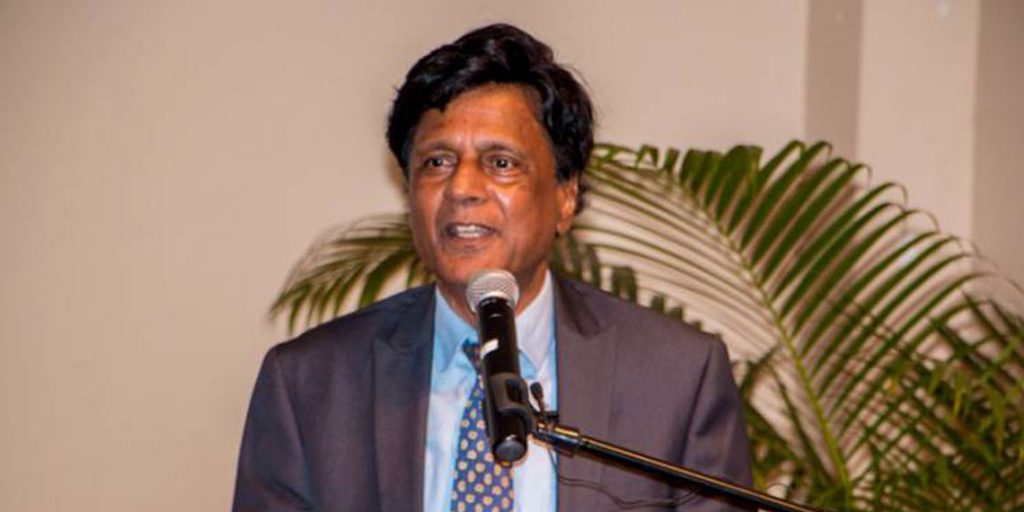On May 26, Guyana once again commemorated the “Independence” that was given to the PNC government by the British in 1966 after engineered the latter’s victory in the Dec 7,1964, elections.
But 1964, and specifically May 26, 1964, also marks a rupture in the history of Guyana and more specifically, the history of the relations between African and Indian Guyanese which needs to be bridged.
The political competition between the African-Guyanese based PNC and the Indian-Guyanese based PPP segued from the “sweeping out the PPP with brooms” in 1961 elections through the burning and looting of Indian businesses in Georgetown on Black Friday, Feb 16, 1962 and the spread of tit-for-tat ethnic violence and arson across the Demerara Coast. The culmination was the pogrom against Indians of Wismar-Christianburg on May 25-26, when 220 Indians homes were razed, two Indians were murdered, several women and girls raped, almost the entire Indian population of 3000 were forced to flee, and the explosion of the Sun Chapman on July 7, killing 43 of the all-African passengers headed towards Wismar from Georgetown. The retaliatory killing of five more Indians who had returned or stayed behind at Wismar was almost an anti-climax. The Inquiry into the bombing of the Sun Chapman found its causes to be “inclusive”, while that into the Wismar Pogrom, declared it to be “politically and racially inspired”.
When we “look back at history” we can only do so from our present in which questions are posed for answers sought. For me, one question has been how and why the history of the Indian Guyanese of Wismar, has been so completely “silenced”, in the sense of the word used by Rolph Trouillot: “By silence, I mean an active and transitive process: one “silences” a fact or an individual as a silencer silences a gun. One engages in the practice of silencing.”
But we simultaneously, from our present, should have our eye on our future – a future we hope to create, with the knowledge gleaned from the past. For me it is a future in which all Guyanese can live in peace to create their progress and not be manipulated to a return of that past.
But the rupture of the silencing of the history of the period, needs to be rectified, if for no other reason that allowing the survivors of those events to express their grief about their experiences. It is quite possible that the reason for the silence about the period may be because the political leaders “wanted to move on”, but in the new millennium, there were some who evidently think otherwise.
One such person is David Granger who referred to the inter-ethnic violence of the 1960’s as the “disturbances” and “the troubles”. In a 2003 paper, without ever mentioning the preceding Wismar atrocities, he wrote “The most alarming slaughter of the ‘Disturbances’ was that of 40 Africans on 6 July at Hurudaia in the Demerara River as they travelled in a motor launch to Mackenzie.”
The following year, a “Son Chapman Tragedy Commemoration Committee”, with the PNC integrally involved, organised a 40th Anniversary event at the fatal spot at Hurudaia on the Demerara River. Robert Corbin, leader of the PNC said, “a nation that fails to record its history is bound to make the same mistakes.” After Granger became the leader of the PNC in 2011, he attended the now annually observed Commemoration ceremony and declared he wished more people would converge at the spot. The Motto on the Monument at Hurudaia declared: “Those who forget the lessons of history do so at our own peril.”
In 2013, Granger and the PNC initiated moving the commemoration to the centre of Linden so the people there “would not forget”. The PNC kept this promise and on July 6, 2020 did so without once mentioning the Wismar ethnic cleansing of Indian Guyanese, the PNC representatives bemoaned the “pain and hurt” of the survivors. But Dr Alissa Trotz and Red Thread hand also interrogated the purpose of this commemoration and queried the silencing of the preceding tragedy of the violence and ethnic cleansing of Wismar. They interviewed many of the refugees from Wismar, living on the East Coast of Demerara. Like the survivors of the Sun Chapmen, their loss is also palpable.
We cannot undo the past, but I believe we should errect a memorial for all the 176 Guyanese who perished in the 1964 disturbances and need restorative justice.
ROAR of Ravi Dev
